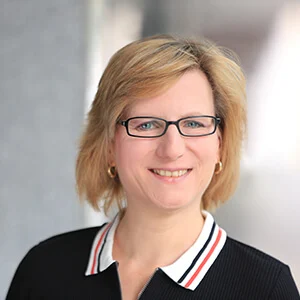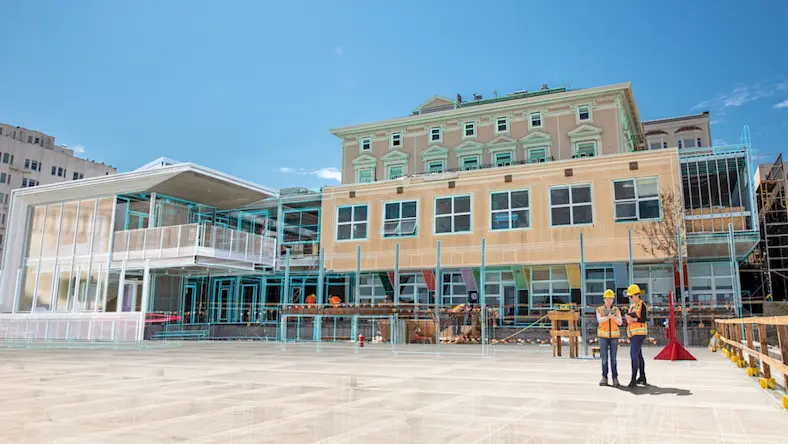& Construction

Integrated BIM tools, including Revit, AutoCAD, and Civil 3D
& Manufacturing

Professional CAD/CAM tools built on Inventor and AutoCAD
In Switzerland, retailer SPAR Handels AG bought a total of 60 gas station convenience stores and has converted them into Spar Express mini-marts. The renovations swapped out the facades, interiors, and layout of the stores as quickly as possible to minimize retail downtime. SPAR had converted the first two stores using conventional methods with no digital scanning, but was confronted with significant issues: The shelving and furnishings had been produced using outdated as-built plans and incorrect measurements, didn’t fit, and had to be reordered and remade. The repeated transport involved in correcting the error also increased costs.
In November 2020, SPAR Handels AG commissioned BIM Facility AG, a building information modeling (BIM) specialist based in Zürich, to scan its newly acquired convenience stores and create digital twins of the facades and retail spaces. The company started converting stores in accordance with corporate design guidelines and soon reopened all 60 stores under the new brand name SPAR Express.
SPAR Handels AG paid around 140,000 Swiss francs (US $160,000) for BIM Facility AG’s services, but the benefits of 3D laser scanning and creating the BIM model far exceeded the time and money spent. “At around 2,500 Swiss francs per store, it costs approximately the equivalent of paying a single member of staff for three or four days,” says Elias Steiner, head of Construction + Store Design at SPAR Handels AG. “My tentative estimate is that the conventional process would cost at least twice that.” He adds that the data obtained using conventional methods would likely be of poorer quality—which had proved true in the case of the first two store renovations.
It’s also costly and time-consuming to source old building plans—which might not be very useful. Matthias Wasem, CEO and Partner at BIM Facility AG, says that on a current project for a major transport company, planners estimate an average of 9–17 working days to locate and provide as-built plans, with a total cost of just under 5 million Swiss francs (US $5.7 million). A better strategy is to “get out there, scan the place, and create up-to-date plans,” Wasem says. BIM Facility AG had a similar experience in the case of the SPAR project, realizing many advantages by employing 3D laser scanning.
Each of the 60 Swiss convenience stores that were converted into SPAR Express mini-marts measures between 50 and 70 square meters (around 540 to 750 square feet). The conversion process included fitting new check-out areas, refrigerators, counters, and shelves to corporate design guidelines. The store exteriors also needed to be recognizable as SPAR Express marts.
“A brief interruption to daily business was all we needed to scan the retail space,” Wasem says. He adds that the project managers helped allay any fears in advance and explained that any inconvenience to staff and customers would be limited—as well as communicating that customers had to leave the premises to avoid being scanned.
Each scan takes between 30 seconds and four minutes per position, and the person who carries out the scanning is usually on the premises for two hours. One to two stores were scanned each day using this method. Instead of carrying a tripod, modern surveying staff moved slowly around the premises with a scanner strapped to their chests.
Several 360-degree scans were made using the 3D laser scanner to generate point clouds, which contain billions of individual measurement points. These measurements were made from several locations in the retail space, resulting in overlaps and multiple point clouds. Analysis software assisted the merging of individual point clouds into one.
Architects and civil engineers then used the point clouds to generate actual plans and 3D models. “It takes great precision to classify these point clouds in Autodesk ReCap,” Wasem says. “Our BIM modelers inserted the walls and shelves along the point clouds with the end result being a digital model or a plan of the actual physical state.”
Staff at BIM Facility AG created a .rcp file, which the construction department could feed into Autodesk Revit software to work on the high-resolution BIM model. The shelves, bistro bar, counters, refrigerators, and stand-up display—all featuring the SPAR design—already existed as digital objects in the Autodesk Construction Cloud and were placed into the model. The new furnishings were ordered based on this precise 3D model. “This left no uncertainty about whether the new furnishings will fit,” Wasem says.
SPAR converted 60 convenience stores in the 10 months between December 2000 and October 2021. Steiner says this pace would not have been possible without the 3D scans that provided the basis for the digital models and the ecosystem of the Autodesk Construction Cloud. “The plan was to convert two convenience stores per week during the most intense phase,” he says. “And so we made sure we had completed all the scans after just 12 weeks.”
Downtime was another reason why SPAR Handels AG was keen to complete the conversion quickly. “Converting the retail spaces to SPAR Express stores allowed us to increase revenue by up to 10%,” Steiner says. “The convenience stores that were converted using the digital twin were able to open under the SPAR logo much faster than those initially converted using incorrect plans and measurements,” Wasem says.
Wasem is open to follow-up projects, and Steiner says the foundations are already in place. “SPAR can quickly implement future innovations to its stores if the digital twin data is regularly updated,” Steiner says. “It would allow us to install a new ventilation system or change the corporate design in no time.”
Susanne Frank studied American studies, English, and theater studies (MA) at the Friedrich Alexander Universität Erlangen-Nürnberg before training as an online journalist. She was responsible for public relations in the marketing department of a medium-size software company for 11 years before switching from PR to journalism in 2015. She has occupied roles as editor and editor-in-chief at several prominent German trade magazines and has been working as a freelance journalist since 2019.
Executive insights
Executive insights
Executive insights







